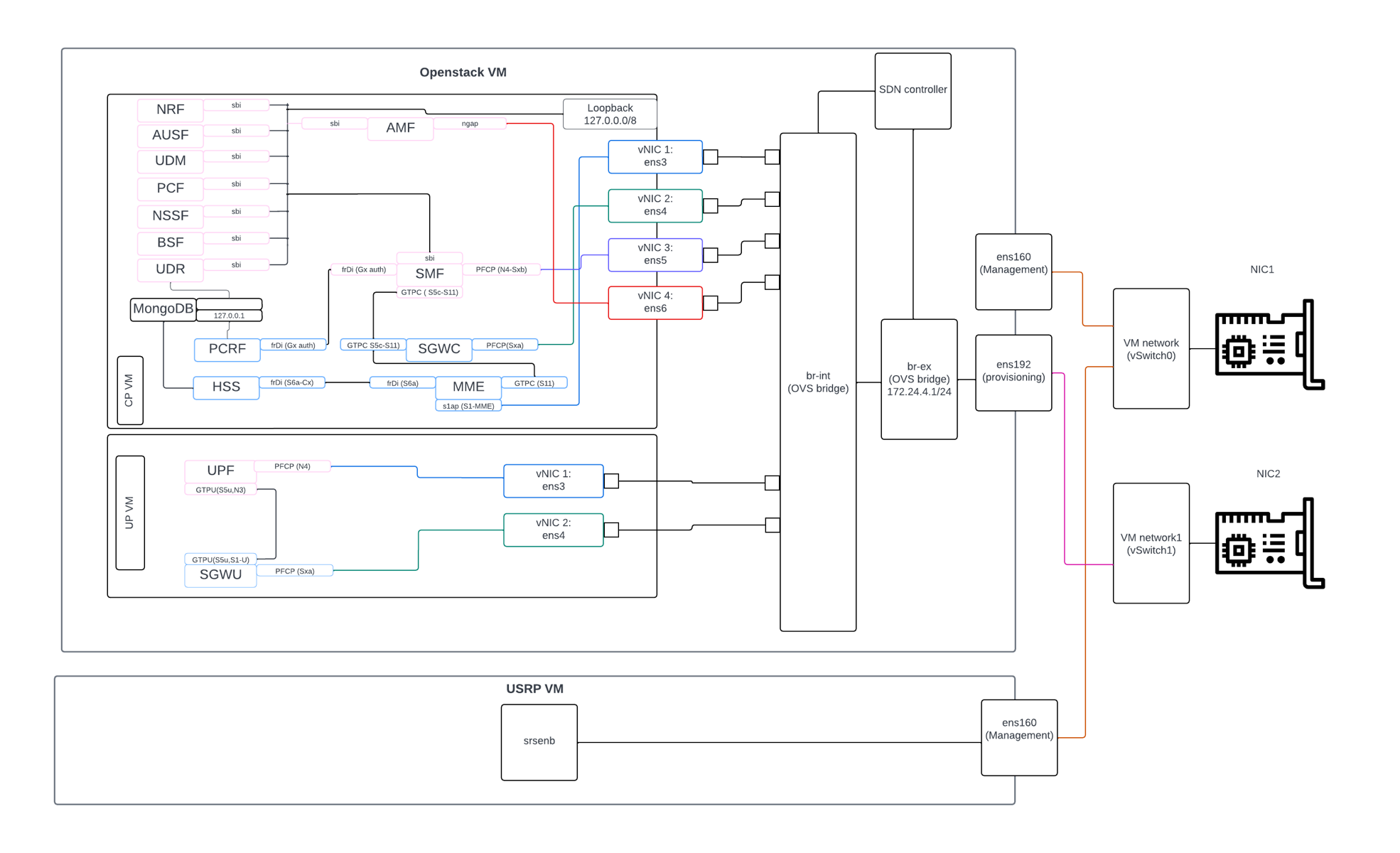Project Summary: Since the introduction of the first-generation mobile network in the 1980s, mobile wireless communication requirements have been growing significantly over the past decade, from analog phone calls to real-world applications such as autonomous vehicles, remote surgeries, and advanced robotics. These real-world applications depend on three fundamental building blocks required for 5G networks: Enhanced Mobile Broadband (eMBB), Ultra-Reliable Low Latency Communications (URLLC), and Massive Machine Type Communications (mMTC) that will allow more devices to connect at once, faster data rates, and lower latency. In order to deliver these requirements, it is necessary to apply different technologies to provide customization, flexibility, and management in the 5G network, such as Software-Defined Networks (SDN) and Network Function Virtualization (NFV). SDN and NFV will help to manage the resources better, enable scalability, manage the network from a centralized perspective, and restore system functionality after an attack. Also, it is possible to apply different mitigation services against anomalies in the network using machine learning.
This project builds a 5G SDN testbed using open-source tools such as Openstack and Onos for SDN capabilities, Open5Gs for the core network, and srsRAN for the gNB simulation. This testbed can be used for various research purposes including network management, security protocols, and performance analysis of 5G services.
This project is funded by US National Science Foundation and NSA.

Sub-Sections: The following pages shows the in detail overview of the Testbed’s subsections –
